De Havilland DHC-8-300 Dash Qantas
Production Time 9 to 10 weeks
Shipment is by FedEx, UPS or DHL International Express Courier with a normal door-to-door delivery time worldwide of within 2-3 business days after dispatch. Due to the current volatility of world fuel prices, the amount mentioned here is our best estimate for DHL and UPS and may be subject to change at the time of shipping.

Model Description: De Havilland DHC-8-300 Dash Qantas Wood Replica Scale Custom Model Aircraft
Manufacturer: De Havilland
Wingspan: 17 Inches (43.2 Centimeters)
Height: 4.6 Inches (11.7 Centimeters)
Scale: 1:64
Registration: VH-TQH
$239.50
Production Time 9 to 10 weeks
-
United States dollar ($)
-
Pound sterling (£)
-
Euro (€)
-
Australian dollar ($)
-
Canadian dollar ($)
-
Singapore dollar ($)
-
Swiss franc (CHF)
-
Japanese yen (¥)
-
Danish krone (kr.)
-
Hong Kong dollar ($)
-
Norwegian krone (kr)
-
Swedish krona (kr)
-
United Arab Emirates dirham (د.إ)
General Product Description
Our PlaneArts De Havilland DHC-8-300 Dash Qantas model exhibits unique, unrivaled quality and detailed design to come as close as possible to the accuracy of the actual plane. It comes as standard with a robust, durable base or stand which is available in a variety of different finishes designed to match your own personal requirements including solid wood, wood with polished metal supports or adjustable wood wall mount and will be ready within about 9-10 weeks from placement of order.
The De Havilland DHC-8-300 Dash Qantas model is made of the finest kiln dried renewable mahogany wood (commonly known as Lauan or Meranti) which has undergone many stages of carving and meticulous and careful sanding giving the beautiful finished museum quality masterpiece. Many collectors and model connoisseurs demonstrate their preference for genuine handmade and hand painted mahogany wood models rather than plastic or die cast (diecast) alternatives due to the overall look and totally different feel of the item - we trust you will find the same. We can, however, if required produce the same model in Solid Cast Resin so just click and contact us us for further information. Our craftsmen and gifted artisans ensure that our finely handcrafted model airplanes match the precise blueprint details of the original aircraft. The paint scheme, markings and parts are closely matched, reflecting the original aircraft. This stylish top-quality desktop replica model will surely enthrall anyone who receives this as a gift and for sure one of the most appropriate and desirably collectable gifts for any aviation enthusiast and avid aircraft collector whilst also displaying a perfect resemblance to the actual aircraft.
If you require we can also make the De Havilland DHC-8-300 Dash Qantas model in any other airline, private livery or colour scheme you require and if necessary in a different size or scale. Just click here to contact us with a description or photographs of what you require, and we will let you have a quotation for the necessary customization by return email. We can also make bespoke scale replicas of any other private / civil commercial airliner or airliners, helicopter, glider, gliders with engines, military jet, warplane jets, propeller warplanes, biplane, triplane, tail fin, spacecraft, rocket or NASA model you require in any airline, military or civilian livery or colors. We also produce model airships, blimp, dirigible, blimps, boat and ship collectibles. Wall plaque or seal for military, government or private customers. Again, by clicking here to contact us just let us know exactly what you need.
The De Havilland DHC-8-300 Dash: A Vital Asset in Qantas’ Regional Fleet
In the realm of regional aviation, few aircraft have left as significant a mark as the De Havilland DHC-8-300 Dash, often simply referred to as the Dash 8. For Qantas, Australia’s flag carrier, the Dash 8-300 has become an indispensable part of its regional operations, connecting far-flung communities with major cities and supporting the country’s economic and social infrastructure. This turboprop aircraft, known for its reliability, efficiency, and versatility, continues to play a crucial role in Qantas’ regional fleet.
A Brief History of the DHC-8-300 Dash:
The De Havilland Canada DHC-8 series, popularly known as the Dash 8, was introduced in the 1980s as a response to the growing demand for short-haul regional aircraft. The Dash 8-300 variant, launched in 1989, quickly became a favorite among regional carriers for its balance of capacity, range, and operational efficiency. With a seating capacity of up to 50 passengers, the Dash 8-300 was designed to serve routes that required frequent service but didn’t justify the use of larger jets.
Qantas first introduced the Dash 8-300 into its fleet in the early 1990s, under the operation of its regional subsidiary, QantasLink. The aircraft was perfectly suited to the airline’s extensive domestic network, particularly in servicing remote and rural areas where runway lengths are shorter, and passenger demand varies seasonally.
Technical Specifications and Performance:
The Dash 8-300 is powered by two Pratt & Whitney PW123B turboprop engines, each delivering around 2,380 horsepower. This power, combined with the aircraft’s robust design, enables the Dash 8-300 to operate from shorter runways, making it ideal for regional airports that lack the infrastructure to accommodate larger jets.
The aircraft has a maximum cruise speed of 328 mph (528 km/h) and a range of approximately 1,500 miles (2,400 km), depending on payload and weather conditions. This range is more than adequate for most regional routes within Australia, allowing QantasLink to maintain frequent and reliable services to a wide array of destinations.
One of the Dash 8-300’s standout features is its advanced noise and vibration suppression system, which significantly enhances passenger comfort. The “Q” in some variants, such as the Dash 8-Q300, stands for “Quiet,” reflecting the aircraft’s ability to minimize cabin noise—an essential feature for an aircraft frequently operating in and out of regional airports where noise restrictions can be stringent.
Operational Role in Qantas’ Fleet:
Within QantasLink’s operations, the Dash 8-300 has proven to be a versatile and dependable workhorse. It serves on a variety of routes, from the bustling corridors between major regional centers to the lifeline routes that connect Australia’s most remote communities to larger hubs. Its ability to handle shorter runways, combined with its fuel efficiency, makes it an economic choice for the airline, especially on less dense routes where larger aircraft would be impractical.
The aircraft’s design also allows it to perform well in challenging operational environments, such as those encountered in Australia’s rugged Outback or tropical northern regions. The Dash 8-300’s robust landing gear and high wing design provide the necessary clearance and durability for operations on gravel or unpaved runways, further broadening the range of destinations it can serve.
Passenger Experience:
Passengers flying on QantasLink’s Dash 8-300 can expect a comfortable journey, despite the aircraft’s relatively small size. The cabin layout is designed to maximize space and comfort, with a 2-2 seating configuration that ensures no passenger is far from an aisle. The large windows provide excellent views, which is a significant plus on scenic routes over Australia’s diverse landscapes.
Thanks to the aircraft’s noise suppression technology, the cabin remains relatively quiet, allowing passengers to enjoy a peaceful flight. The lower cruising altitude of the Dash 8-300 compared to jet aircraft also provides a smoother ride in turbulent conditions, a feature appreciated by frequent flyers on regional routes.
Looking to the Future:
As Qantas continues to evolve its fleet to meet modern demands, the Dash 8-300 remains a vital part of its regional strategy. While newer aircraft models may eventually replace the Dash 8-300, its legacy of reliable service and adaptability will ensure it is remembered fondly by both passengers and crew.
The Dash 8-300 has proven itself to be more than just a regional aircraft; it’s a symbol of connectivity and accessibility in a vast country where aviation plays a critical role in linking communities. For Qantas, the Dash 8-300 has been, and continues to be, a key player in fulfilling its mission to bring Australia closer together.
| Weight | 6 kg |
|---|---|
| Dimensions | 15.9 × 17 × 4.6 in |

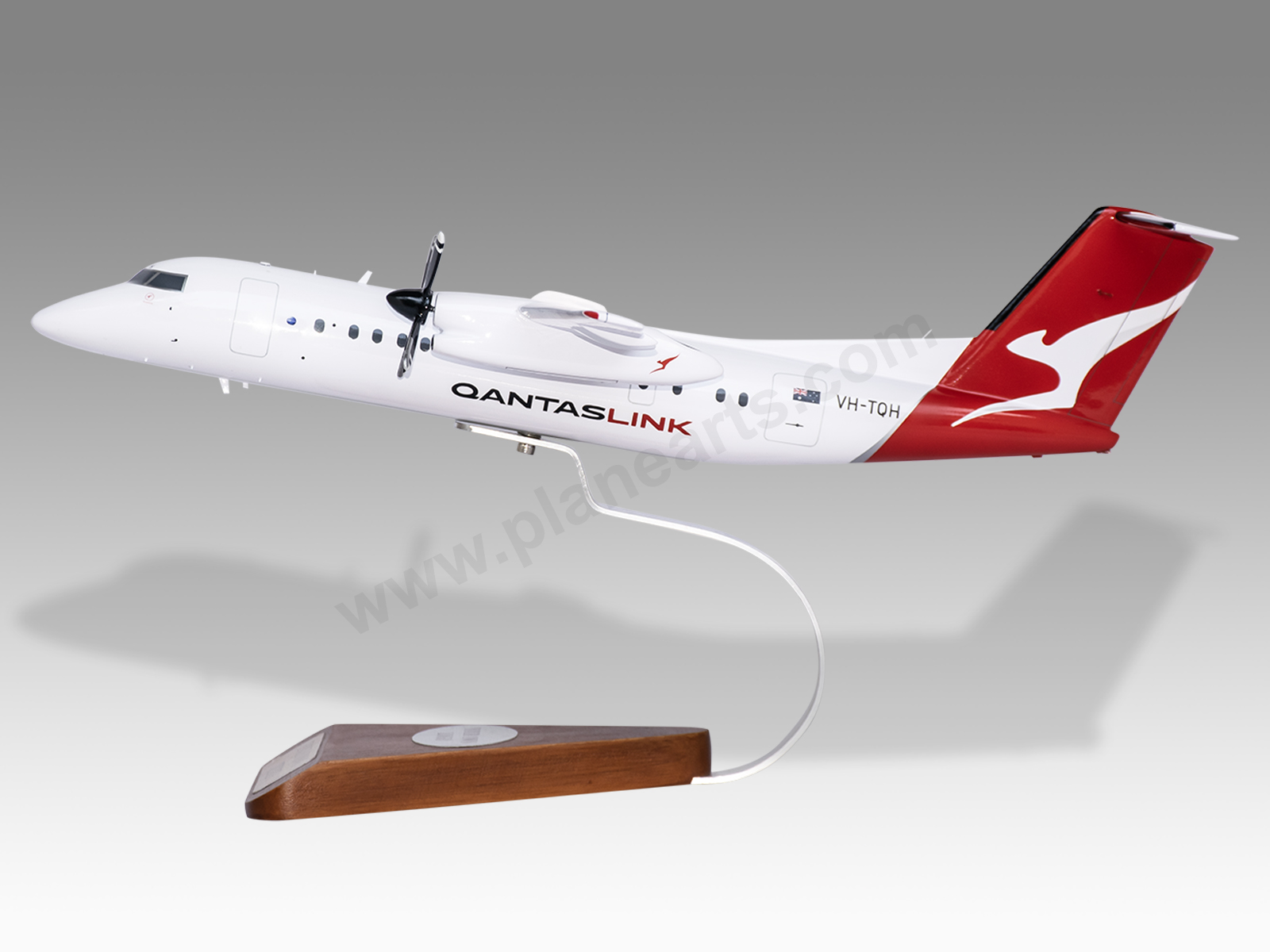
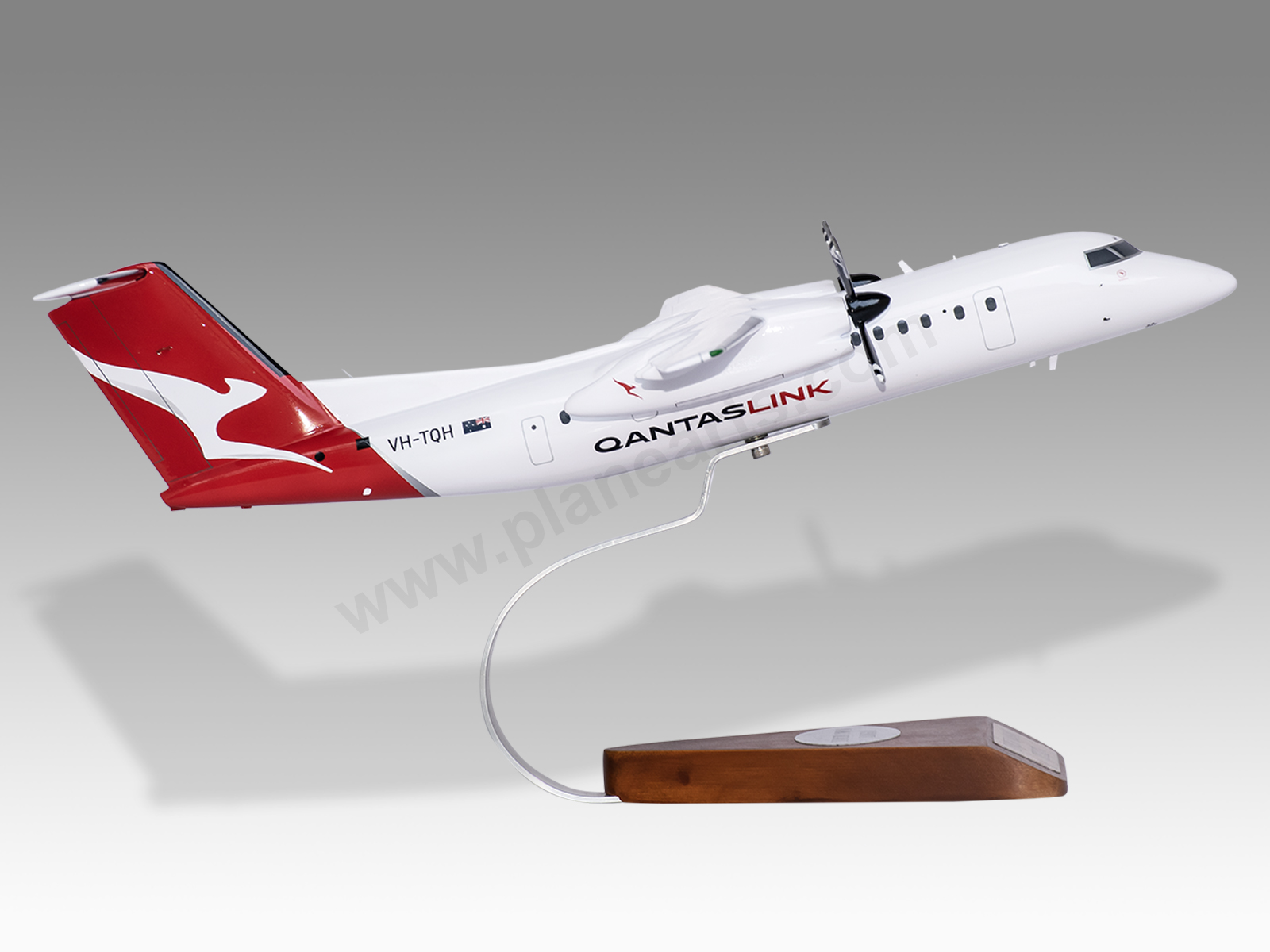
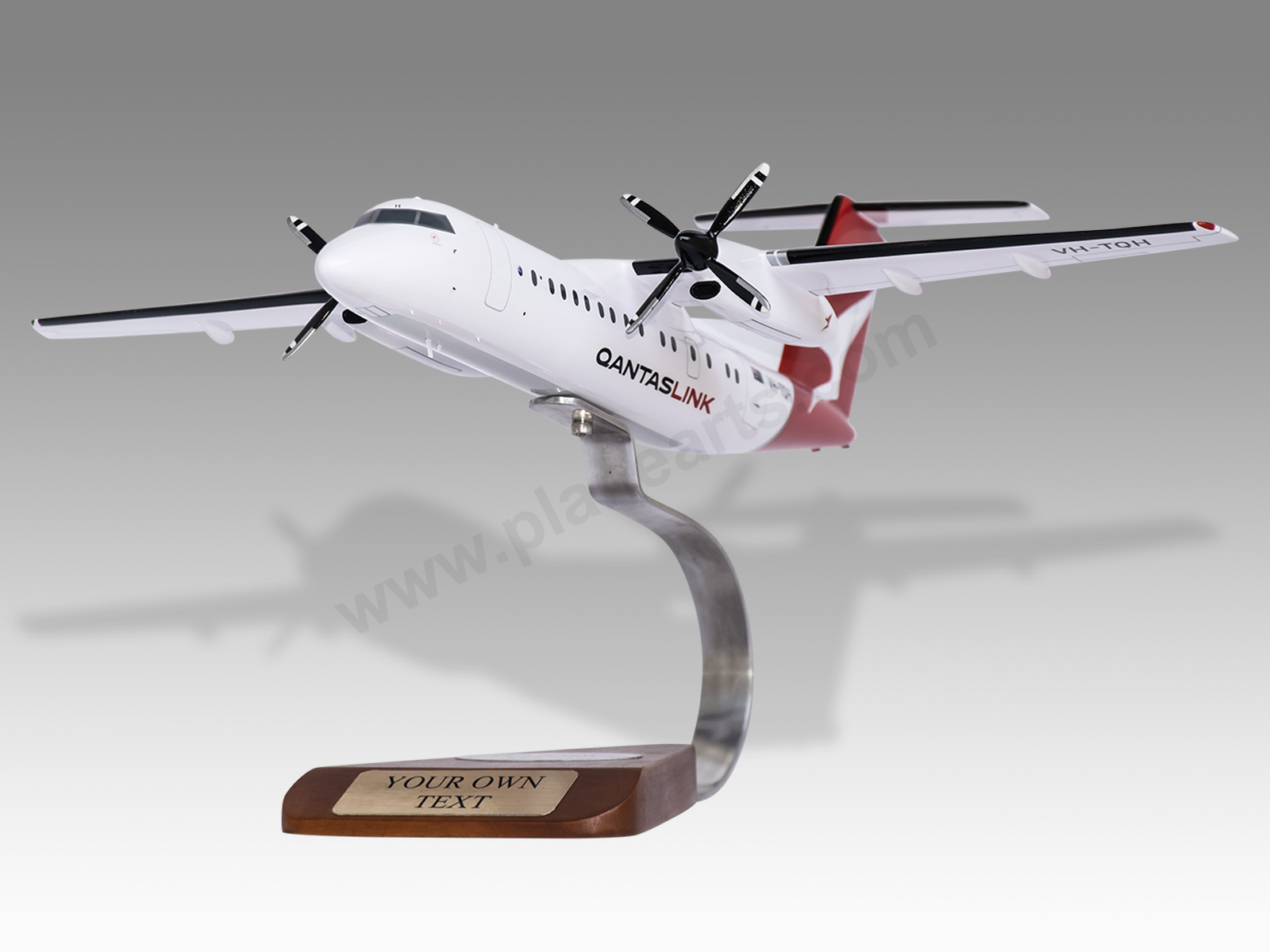
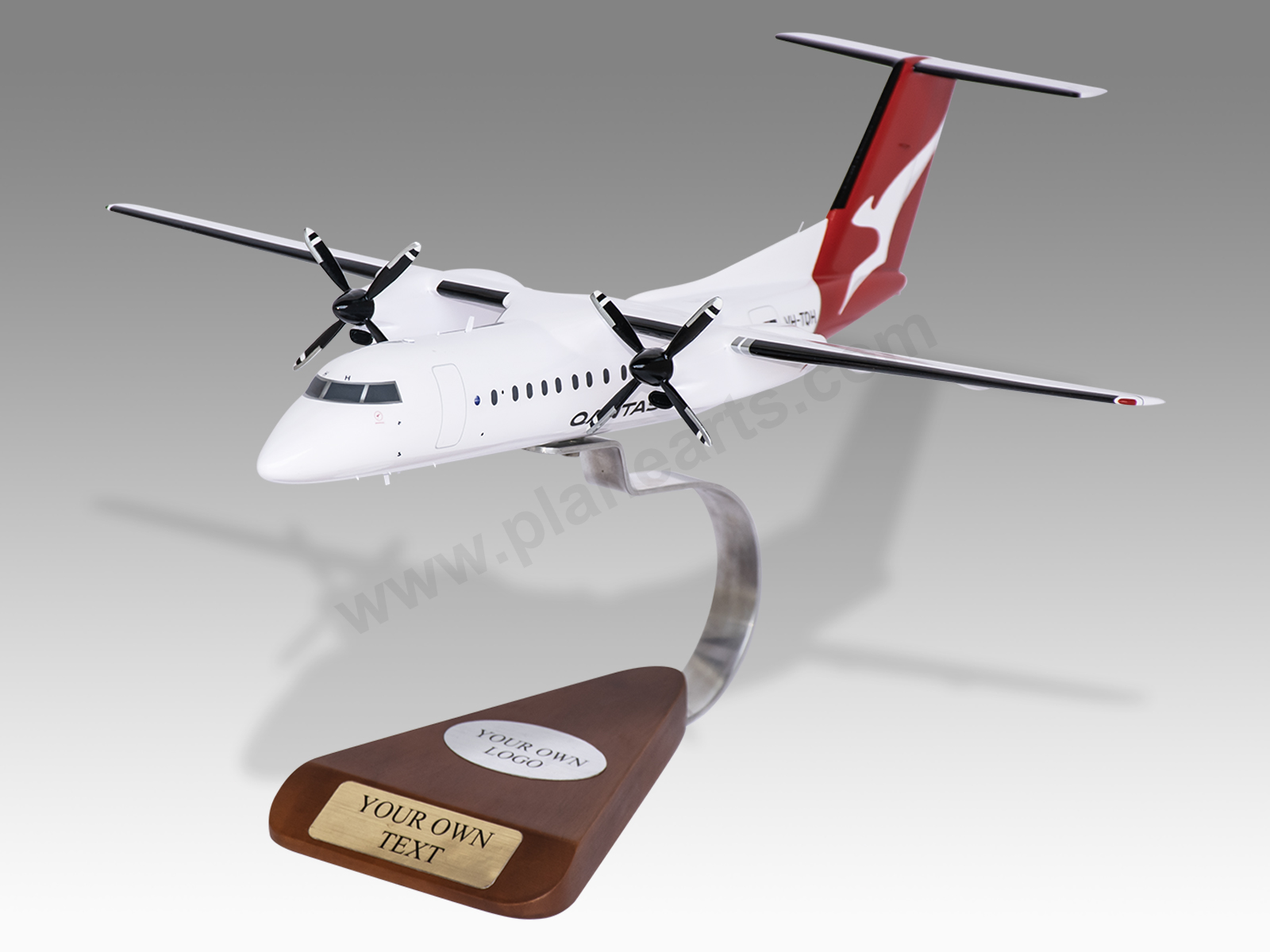
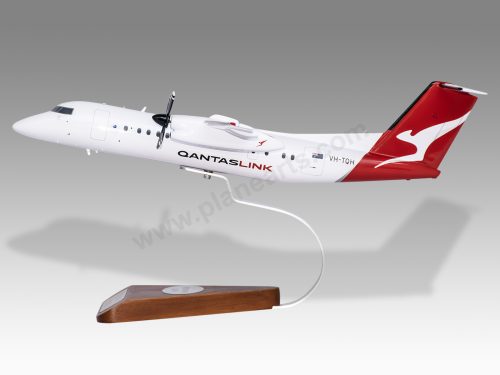

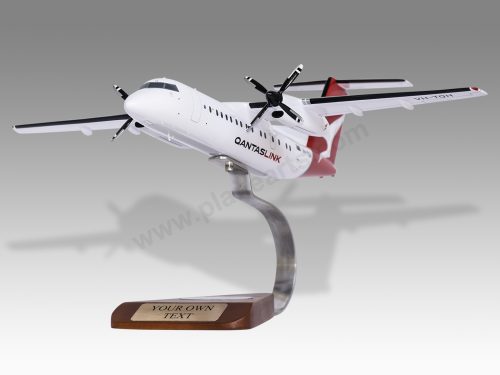

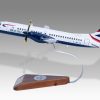

Reviews
There are no reviews yet.